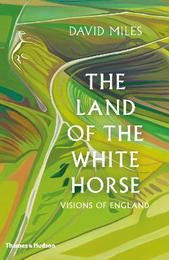
|
The Land of the White Horse: Visions of England
Hardback
Main Details
| Title |
The Land of the White Horse: Visions of England
|
| Authors and Contributors |
By (author) David Miles
|
| Physical Properties |
| Format:Hardback | | Pages:304 | | Dimensions(mm): Height 234,Width 153 |
|
| Category/Genre | Archaeology
Archaeology by period and region |
|---|
| ISBN/Barcode |
9780500519936
|
| Classifications | Dewey:942.576 |
|---|
| Audience | |
|---|
| Illustrations |
61 Illustrations, black and white; 24 Illustrations, color
|
|
Publishing Details |
| Publisher |
Thames & Hudson Ltd
|
| Imprint |
Thames & Hudson Ltd
|
| Publication Date |
26 September 2019 |
| Publication Country |
United Kingdom
|
Description
The White Horse at Uffington is an icon of the English landscape - a sleek, almost abstract figure 120 yards long which was carved into the green turf of the spectacular chalk scarp of the North Wessex Downs in the early first millennium bc. For centuries antiquarians, travellers and local people speculated about the age of the Horse, who created it and why. Was it a memorial to King Alfred the Great's victory over the heathen Danes, an emblem of the first Anglo-Saxon settlers or a prehistoric banner, announcing the territory of a British tribe? Or was the Horse an actor in an elaborate prehistoric ritual, drawing the sun across the sky? The rich history of this ancient figure and its surroundings can help us understand how people have created and lived in the Downland landscape, which has inspired artists, poets and writers including Eric Ravilious, John Betjeman and J.R.R. Tolkien. The White Horse itself is most remarkable because it is still here. People have cared for it and curated it for centuries, even millennia. In that time the meaning of the Horse has changed, yet it has remained a symbol of continuity and is a myth for modern times.
Author Biography
David Miles was the Director of the Oxford Archaeological Unit for many years, and worked on projects in Britain, France, Greece and the West Indies. In 1999 he became Chief Archaeologist at English Heritage, where he developed a maritime archaeology unit and a project to study the impact of slavery in England. He has written many books on archaeology, particularly on the Roman and Migration periods in Britain, and one on the origins of the British, The Tribes of Britain.
|